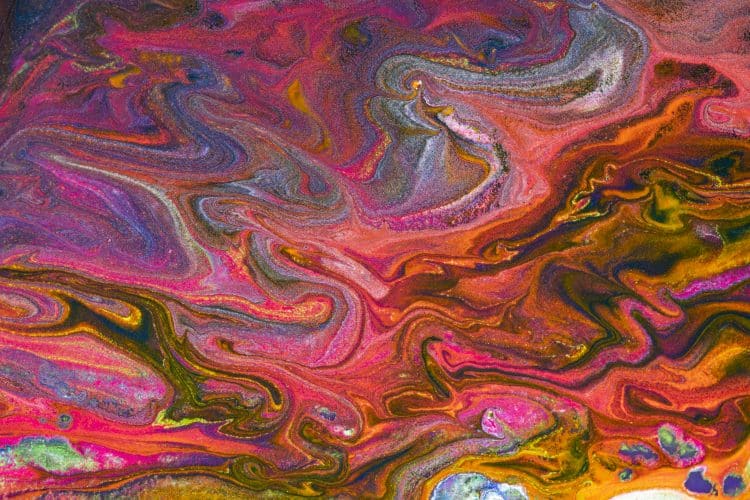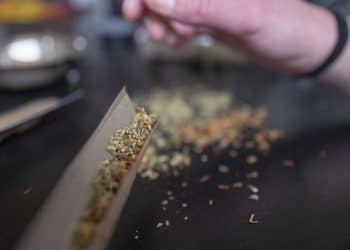Even today, the single word “psychedelic” can still lead to completely opposite reactions.
There are those who let themselves be carried away by the sweet and confused memories of an experimental youth, those who want to keep away even from the sound of this mysterious and frightening word, those who with genuine curiosity want to get closer to this fascinating world, and those who study and do research to find innovative solutions to problems that afflict many people.
By psychedelic substance, we mean any compound capable of influencing the central nervous system (CNS), thus changing the normal functioning of the brain and generally altering perceptions, moods, and behavior. [1] Substances capable of generating these behavioral alterations are commonly called psychotropic drugs.
It should be noted that the word “drugs” can be used to refer to medicines or substances that have been considered legal for years and that many of us regularly take, such as nicotine or alcohol. Some drugs can be useful to compensate for malfunctions in our body, mental or physical illnesses. Although we know that humans have been experimenting with psychedelics for thousands of years, the in-depth study of these substances is a relatively recent matter.
The “Birth” of Psychedelic Drugs
The most accredited theory assumes that the co-evolution of the animal and plant kingdoms led to the creation of the first drugs. To protect themselves from large herbivores of the past, many plant species developed metabolic pathways that led to the production of extremely powerful chemical substances: alkaloids.
An alkaloid is an organic compound, usually plant-based, that has the ability to cause significant physiological changes even after taking just a small dose. [2] The use of psychotropic substances has accompanied the development of human civilization since its inception. Hallucinogenic plant derivatives and alcoholic fermented drinks have been found in archaeological sites of the prehistoric age.
Paleolithic man had a knowledge of the effects of the herbs he collected and used for recreational, nutritional, and healing purposes.
In general, this is a behavior that also occurs in other species besides humans: numerous cases of living beings consuming plants with medicinal or, sometimes, simply intoxicating effects have been documented. The tendency to use narcotic substances is inherent to the animal kingdom itself. The reason has to be found in the adaptogenic function that some plants possess. Certain natural active ingredients improve the body’s resistance to environmental stressors and increase the possibility of adaptation and survival in a given habitat.
The First Traces of Use of Psychoactive Substances
Many researches and studies have been done to trace and date excavations and fossils found in the most disparate parts of the world. We must start from the assumption that in any part of the world, wherever there was abundant flora, the psychotropic substances contained in them were more or less used.
In the European area of prehistoric times there was a great variety of species and fungi with psychoactive properties, such as hemp (Cannabis sp.), ephedra (Ephedra sp.), opium poppy (P. somniferum), some members of the Solanaceae family, such as black henbane (Hyoscyamus niger), deadly nightshade (Atropa belladonna), jimsonweed (Datura sp.) or mandrake (Mandragora officinarum) but also hallucinogenic mushrooms such as the liberty cap (Psylocybe semilanceata), ergot fungus (Claviceps purpurea), or even the fly agaric mushroom (Amanita muscaria), among many others.
It is important to underline how these plants and fungi, despite being known for their psychoactive and psychotropic effects, could also be used for other purposes, such as the production of fiberl. Others, however, were used as food for animals or simply accidentally collected as infesting plants in the fields. Therefore their presence in archaeological sites does not necessarily mean that they were used by man as mind-altering substances.
One of the earliest findings testifying the presence of psychotropic plants in the Old World is that of a middle paleolithic burial cave in Shanidar, northern Iraq, approximately 60,000 years BC. A number of medicinal plants were found around the skeleton of an adult man aged between 30 and 40, including ephedra, a natural stimulant. [2]
Some evidence of the use of psychotropic substances by man dates back 7,000 years ago and comes from some rock representations in a cave in Tassili N’Ajjer in Algeria. The ancient illustrations depict priests holding mushrooms in their hands.
Some archaeological remains of “mushroom stones” highlight how in Guatemala in 1500 BC, there was a real mushroom cult. Instead, they date back to 1000 B.C. the Mexican statues depicting the Psilocybe mexicana, in which divine figures emerge from the bodies of the fungi, testifying to their spiritual value.
Petroglyphs depicting anthropomorphic figures with mushrooms attached to their heads date again to 1000 B.C., which tell us of the use of Amanita muscaria intoxicating mushroom, among the Čukotka people in Siberia.
The oldest evidence for peyote, on the other hand, is from 3700 B.C. from Native Americans in the Rio Grande area. In Shumla caves have been found remains of “peyote buttons” and small carvings showing a cactus. The Peruvian Chavin stone from 1300 B.C. has a carved sculpture showing a deity holding a San Pedro cactus. Peyote has been used for ceremonial purposes in many cultures in Texas and Mexico as early as 1000 BC. [3]
Psylocibin
As mentioned, the first uses of psilocybin date back thousands of years ago, but even in recent decades, this substance has aroused renewed interest in the field of medical research, more specifically in psychological therapy. Western medicine became interested in this substance in 1958, when it was first identified and isolated.
It was subsequently synthesized by Albert Hoffman in 1959. In 1960, psilocybin was widely used in the treatment of psychological disorders such as depression or to treat addictions, with time and diffusion, this substance also became famous for recreational use, from 1970 onwards, its use in the medical field slowly waned. Since the late 1990s, psilocybin has regained some popularity, but only ever as a recreational drug. [4]
Peyote
Peyote (Lophophora williamsii) is a well-known cactus with psychotropic properties found mainly in northern Mexico, one of the most renowned hallucinogenic plants in the world. This plant was used in shamanic rites of the pre-Hispanic period. In fact, these rituals have been practiced by native populations since very ancient times and have partially fallen into disuse since the period of Spanish conquest. At the center of these rituals was the cult of Peyote. Based on some rock paintings and archaeological excavations, it has been deduced that these rituals date back 3000 years ago, this cactus was already known and used in very ancient times.
The ethno-geographical origin of Peyote appears today to be a fairly large area north-west of Mexico, corresponding to the territories of the Tarahumara, the Cora, and the Huicholes. From here, the ritual and medicinal use of the cactus spread to the south with the Toltecs and Aztecs in the classical era, and then to the north in a much more recent era towards the Indians of the Great Prairies in the 19th century.
Here, the use of peyote became a true sacrament, at the center of a syncretic cult that, at the end of the century, catalyzed the hopes of rebirth of the “native” nations with various shaman-preachers. The name peyote derives from peiotl of Nahuatl origin, a language of the Aztecs, a name that probably refers to the silk cocoon due to the white fuzz that covers the button-like surface of the cactus. The scientific name Lophophora also etymologically means “ridge-bearing”. [5]
LSD
LSD (lysergic acid diethylamide) is a psychedelic substance capable of causing behavioral changes, sensory amplifications, a sense of peace, extreme calm, but also hallucinations, or the famous bad trip, anxiety, fear, and psychological discomfort. Since its discovery, LSD has often been used in clinical trials on patients and even by psychiatrists themselves. Its use soon went beyond medical boundaries and spread very quickly as a recreational drug. LSD was first synthesized in 1938 by the Swiss chemist named Albert Hoffman (1906–2008).
After having brilliantly completed his studies, Hoffman joined a chemical-pharmaceutical laboratory in Switzerland as an assistant to dedicate himself to the search for natural molecules that could be used for the creation of new drugs. In 1938, Hoffman first systematized this powerful molecule, with similar structure to ergot alkaloids: in fact these fungi contain ergotamine which is the precursor of the lysergic acid.
After some unsatisfactory tests on animals, Hoffman accidentally absorbed a very small dose through his fingertips, thus experiencing sensations that were unusual for him, such as dizziness, restlessness, and hallucinations, which vanished after a few hours. A few days later, the chemist decided to voluntarily take LSD to confirm the origins of the sensations he had previously felt.
From here, experiments began in which Hoffman described the various sensations, both positive and negative, that this new substance caused him. LSD quickly spread even outside the academic sphere, influencing the cultural and social aspects of the time, which is why at the end of the 1960s LSD was declared illegal by the United States government. [6]
References:
[1] Baron S, Linton S, O’Malley MA. On Drugs. J Med Philos. 2023 Nov 3;48(6):551-564. doi: 10.1093/jmp/jhad035. PMID: 37352546; PMCID: PMC10629940.
[2] Guerra Doce E., The Origins of Inebriation: Archaeological Evidence of the Consumption of Fermented Beverages and Drugs in Prehistoric Eurasia. «Journal of Archaeological Method and Theory», 22 (2015), p. 715.
[3]https://www.slow-news.com/serie/il-lungo-viaggio-storia-universale-della-psichedelia/le-sostanze
[4] Filip Tylš, Tomáš Páleníček, Jiří Horáček, Psilocybin – Summary of knowledge and new perspectives, European Neuropsychopharmacology, Volume 24, Issue 3, 2014, Pages 342-356, ISSN 0924-977X,https://doi.org/10.1016/j.euroneuro.2013.12.006.
(https://www.sciencedirect.com/science/article/pii/S0924977X13003519)
[5] B. de Sahagún, Historia general de las cosas de Nueva España, riportato in W. La Barre, The Peyote Cult, New York, Schocken Books, 1959, p. 10. L’opera del frate castigliano fu pubblicata per la prima volta in Messico nel 1829-30, cosicché il primo resoconto pubblicato sul cactus “divino” è quello di J. Cardenas nel 1591.
[6]https://www.swissinfo.ch/ita/scienza/60-anni-per-l-allucinogeno-lsd/3270724#:~:text=Nel%201963%20scadde%20il%20brevetto,la%20Sandoz%20cess%C3%B2%20la%20produzione.












